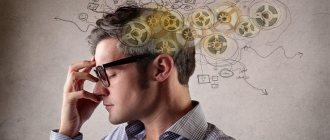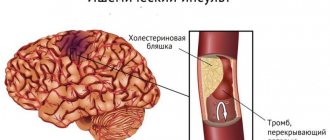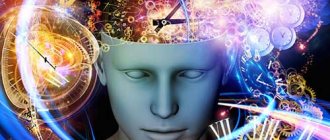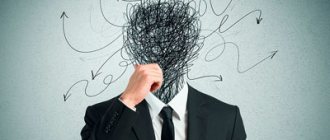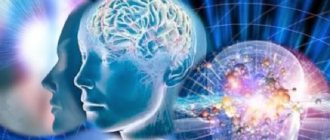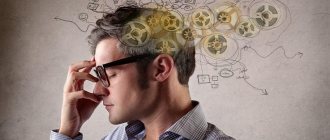Agitation
- this is an intense emotional impulse, which is accompanied by an anxious feeling and fear, turning into motor restlessness, the need to move. An individual who is in such a mood becomes quite fussy. It is capable of performing only simple automated motor operations. He has a feeling of lack of thoughts, the ability to reason and identify complex cause-and-effect relationships between phenomena is disrupted. Thus, the meaning of the word agitation implies a clinical disorder expressed in motor restlessness and the need to move. The condition in question occurs under severe stress and certain mental illnesses, such as catatonic schizophrenia, depressive states, Alzheimer's disease, and anxiety neurosis. Also, the described phenomenon can be provoked by drug exposure or alcoholic libations.
What is agitation as an example
Photo by cottonbro: Pexels
To more clearly imagine the human condition, which is described by the term agitation, let’s simulate the situation.
Imagine that there is a certain situation that worries you greatly, and your future future depends on its successful resolution.
Well, for example, you passed a very difficult exam and are waiting for the results to be announced. Little depends on you, or rather nothing anymore. You constantly analyze your answers, and are completely unsure of their correctness.
The anxiety inside you grows, and you are no longer able to stand quietly and wait: you begin to walk randomly along the corridor, almost unconscious of your movements. The results are still not announced. Time flows endlessly. Your thoughts start to get confused.
A person passing by asks you what time it is. You do not immediately react to his appeal, and try to answer, but cannot form a sentence. You look at your watch and notice that your hands are shaking and your palms have become wet. Your heart is pounding rapidly in your chest. Anxiety inside is growing, and the imagination draws pictures of a negative outcome of events. Anxiety develops into fear, which is replaced by a feeling of emptiness and indifference. Here's the end point: you experience a state of agitation.
Agitation, agitated depression
The proposed variant of manifestation of this condition is a normal reaction to a stressful situation. In this case, the reaction of a person who is emotional and mentally very mobile was described. Of course, each of us will react to stress in our own way, but for each there is a limit of mental stress at which the described signs will appear.
Symptoms (clinical picture) of agitation
When a person exhibits agitation, the following symptoms can be observed:
- motor or speech restlessness; very often the patient does not notice changes in his behavior;
- hand trembling;
- sweating;
- increased heart rate;
- rapid breathing;
- pallor.
In a state of agitation, a person develops a feeling of absence of thoughts and emptiness, he loses the ability to reason and establish complex causal relationships.
Agitation can be identified if a number of signs are present. For example, the patient’s behavior changes, but he himself does not notice it. There is speech anxiety, fussiness in movements, the person’s hands tremble, the face turns pale, sweating increases, and the heart rate increases. In such a state, there are no thoughts, a kind of emptiness is formed, the ability to reason is lost, and causal complex connections are not established. Doctors pay special attention to such a problem as the occurrence of agitation in Alzheimer's disease. In this case, patients also suffer from severe behavioral disorders. In particular, depression occurs, there are complaints of hallucinations of various types, and the person tends to wander.
In this case, the state is characterized as overexcited, excessive agitation is noted. A person begins to use obscene expressions that were previously unusual for him, and clouding of consciousness occurs. With such disorders, normal daily life is disrupted, and problems with sleep arise. In addition, there is a risk that a sick person in a state of agitation will harm himself or those caring for him.
Often, changes in the environment can provoke agitation; factors such as fatigue and fear have an equally pronounced effect on the development of the disease. It has been proven that in some cases, agitation is caused by somatic diseases and infections. You should know that the causes of agitation can be eliminated and cured, which is why it is so important to get help from a qualified specialist. In the event that agitation is not a medical cause, behavioral techniques are used for treatment that can influence the patient’s routine life and distract him from the stress caused by a particular problem.
Pathological manifestation
In the practice of psychiatry, agitation is more often considered as one of the symptoms that accompany mental illnesses:
- Alzheimer's disease;
- agitated depression;
- anxiety neurosis;
- catatonic schizophrenia;
- involutional depression;
- affective insanity.
The painful manifestation of the state of agitation can be provoked by alcohol abuse, or the use of narcotic and psychotropic drugs, antidepressants. Severe infectious diseases can cause mental complications, including pathological agitation.
If, in the case of a normal manifestation of agitation, the symptoms are short-term and disappear when the stressful situation reaches its logical conclusion, then, with a pathological manifestation, this state is long-lasting and independent of external factors or events: the person simply lives in this state or it arises apart from his conscious desire.
List of used literature
1. Usov L.A., Sufianova G.Z., Minakina L.N. "Pharmacology of the central nervous system."
2. Samarenko V.Ya. "Chemical technology of medicinal substances."
3. Bakumov P.A., Evseev A.V. "The use of tranquilizers in therapeutic practice."
4. Murashko N.K. "Psychopharmacotherapy of cardioneurological patients."
5. Serov V.N., Baranov I.I. "Tranquilizers in obstetric and gynecological practice."
6. Verbenko V.A., Verbenko N.V. "Psychotropic drugs in therapeutic practice."
7. Malin D.I. "Critical illness therapy in psychiatry"
8. Drobizhev M.Yu., Ovchinnikov A.A. "Pathogenetic psychopharmacotherapy of anxiety disorders."
9. Ivashchenko D.V. "Safety of the use of tranquilizers from the group of benzodiazepines in alcohol withdrawal syndrome: pharmacoepidemiology and pharmacogenetics."
Share
Share
Causes of occurrence and development
Currently, the emergence and development of the state of agitation is the subject of study and scientific research. It can be assumed that the reasons leading to the development of this pathology are:
- cerebral ischemia;
- influence of toxic substances;
- reflex reactions to neurophysiological processes;
Giphy
- metabolic disorders;
- autoimmune and immune reactions;
- psychological characteristics of a person’s personality.
Diagnostics
The diagnosis is made by a psychiatrist; to clarify it, a consultation with a neurologist and narcologist may be required.
In addition to observing the patient’s behavior, the doctor measures pulse and blood pressure and collects family history. In some cases, the results of clinical and biochemical blood tests, measurement of hormone levels in the blood, urine analysis, and MRI of the brain may be required.
Blood tests are necessary to differentiate between agitation and akatasia, which are very similar in symptoms. Akatasia can occur as a result of taking medications (antidepressants and antipsychotics) that relieve agitation. An additional dose of these drugs can worsen the condition of a patient with akatasia.
Pedantry and anxiety
Those most susceptible to the manifestation and development of pathological agitation are those in whom accentuated traits predominate: pedantic people. It is very important for them to complete the task efficiently. They are sensitive to the accuracy of the work they have created, and if the slightest inaccuracies or inconsistencies arise, they react painfully and emotionally.
This provokes a constant state of anxiety and disrupts psychological balance. As a result, there is a high probability of a traumatic event. Anxious, pedantic people question their actions, decisions, and thoughts. They tend to underestimate their abilities and feel insecure in any non-standard situations.
Among the factors that can complicate and give rise to agitated psychosis, in this case, are usually called:
- difficulties with self-realization;
- problems in relationships with other people;
Photo by cottonbro: Pexels
- stressful situations leading to a rethinking of life values and prospects;
- financial instability;
- excessive criticism from loved ones or work colleagues.
Drugs for the treatment of agitation
First and second generation antipsychotics and benzodiazepines are most often used in treatment.
Depending on the severity of the underlying disease, the drugs are taken orally or administered intramuscularly/intravenously.
To relieve an acute attack of agitation, the drug of choice is haloperidol, which is administered both in tablet form and intramuscularly. Olanzepine (Egolanza, Zolafren, Olfrex), sulpiride (Eglonil), and aripiprazole (Arilental, Frame, Zikalor) are also used.
Medicines to relieve agitation are used strictly as prescribed and under the supervision of a doctor!
Main features
The danger of this type of disorder lies in the fact that in the early stages the disease looks like a normal mental reaction to external events and internal experiences. And yet, there are a number of signs that can help determine the development of pathology:
- increased ideomotor and motor arousal;
- unreasonable fears, an increased state of anxiety, which occurs more often in the evening and creates difficulty falling asleep;
- excessive concern for one’s financial well-being or state of health: may become delusional;
- speech activity: incoherent speech, repetition of phrases, rapid change of topics in conversation;
- disturbances in concentration;
- limiting social contacts;
Photo by MART PRODUCTION: Pexels
- autonomic disorders: hand tremors, increased sweating, dry mouth, shallow and rapid breathing, increased heart rate, pale skin.
List of tranquilizer drugs
In the international Anatomical Therapeutic Chemical Classification (ATC), adopted by the Ministry of Health of the Russian Federation in 2002, anxiolytics (N05B) are included in the subsection of the section Drugs for the treatment of diseases of the nervous system (N) - Psycholeptics (N05). This subsection includes six groups of tranquilizers:
- benzodiazepine derivatives (N05BA): Chlordiazepoxide, Medazepam, Oxazepam, Potassium clorazepate, Lorazepam, Adinazolam, Bromazepam, Clobazam, Ketazolam, Prazepam, Alprazolam, Galazepam, Pinazepam, Camazepam. Nordazepam, Fludiazepam, Ethyl loflazepate, Etizolam, Clotiazepam, Cloxazolam, Tofisopam, Lorazepam in combination with other drugs;
- diphenylmethane derivatives (N05BB): Hydroxyzine, Captodiam, Hydroxyzine in combination with other drugs;
- carbamates (N05BC): Meprobamate, Emilkamate, Mebutamate, Meprobamate in combination with other drugs;
- dibenzo-bicyclo-octadiene derivatives (N05BD): Benzoctamine;
- Azaspirodecanedione derivatives (N05BE): Buspirone;
- other anxiolytics (N05BX): Mefenoxalone, Gedocarnil, Etifoxine, Fabomotizol.
Below we present two lists of tranquilizers that can be prescribed for neuroses and neurosis-like mental disorders based on elements of the leading symptoms.
Rice. 1. Formula of the first tranquilizer.
Target - elements of agitation
Mild and borderline mental disorders may be accompanied by elements of agitation: anxiety, panic, fear, overvalued thoughts of fear, obsessive fears, irritability, dysphoria, difficulty going to bed, decreased sleep duration, vegetative lability, vegetative crises. Elements of agitation are the target of the following tranquilizers:
- Diazepam;
- Alprolasam;
- Phenazepam;
- Lorazepam;
- Clonazepam;
- Flurazepam;
- Medazepam;
- Oxazepam;
- Triazolam;
- Bratizolam;
- Tetrazepam;
- Clobazam;
- Gidazepam;
- Nitrazepam;
- Flunitrazepam.
Target - elements of asthenia
Elements of agitation in reversible mental disorders include: mental and physical asthenia, chronic fatigue syndrome, hypochondria, impaired attention and memory, decreased intellectual activity, weakness, fatigue, lethargy, apathy, exhaustion, irritable weakness, autonomic lability, lack of vigor after sleep, anxiety . If such symptoms are present, the following tranquilizers are effective:
- Adaptol;
- Noofen;
- Trioxazine;
- Tofisopam;
- Buspirone.
The choice of a particular tranquilizer depends on the therapeutic goals, the nature of the disease and the individual characteristics of the patient’s health condition. The same applies to the dosage and timing of taking drugs in this group. Refusal of the doctor’s recommendations for taking an anxiolytic (frequency of dosage, recommended dosage, timing of treatment) is unacceptable.
Prevention and treatment
To prevent the occurrence and development of agitation, it is recommended to avoid stressful situations, maintain a normal physiological daily routine, not use drugs, and also avoid excessive alcohol consumption.
People with a high degree of emotional response, as well as a high degree of personal responsibility, are recommended to regularly attend psychotherapeutic support sessions in order to develop skills to cope with stress.
The main method of treating pathological agitation is psychotherapy. Usually, at the beginning, the method of individual therapy is used, since it is very important for a patient with this diagnosis to create comfortable conditions in order to reduce his level of anxiety.
In the future, with good results from individual sessions, it is time for group therapy. An important role in the treatment of these patients is played by the psychological situation in the family circle, as well as within a close circle of friends.
Agitation in children: characteristic features
In children, agitation occurs during postoperative awakening from anesthesia. It manifests itself as uncontrollable agitation, inappropriate actions, and anxiety.
The child is aggressive towards the doctor and parents, does not give in to persuasion, is irritable, cries for a long time and inconsolably. The condition can last up to half an hour from the moment of regaining consciousness. Then the baby calms down on his own or with the help of medications.
The syndrome is observed in children aged from one to seven. Usually found in patients with prenatal and postnatal disorders, birth injuries.
Agitation in psychiatry
Although agitation may be a normal mental reaction to a stressful situation, its frequent occurrence for no apparent reason is considered by psychiatrists as a pathology and a sign of a number of serious diseases, including:
- bipolar affective personality disorder;
- Alzheimer's disease;
- senile dementia;
- schizophrenia;
- depressive states;
- neurotic disorder;
- senile process.
Frequent outbreaks of agitation interfere with normal functioning and must be treated.
Frequent feelings of anxiety and excessive agitation are the first signs of agitation
page » Hysteria » Frequent feelings of anxiety and excessive excitement are the first signs of agitation
Danger and anxiety overcome every person from time to time. This could be fear for your family, for your health, for your future, or for the stability of your usual lifestyle.
However, if fear and anxiety groundlessly penetrate a person’s life, this is already a serious cause for concern.
Experts call this human condition agitation and classify it as a mental disorder.
Stages of development
There are three stages in the development of anxiety and depression. The first stage is characterized by increased sensitivity to life situations, events and stress. The patient reacts with irritation to minor failures. Anxiety in the first stage is mild, and panic attacks do not occur. The patient becomes tired after normal, previously non-stressful activities and housework. Sleep problems and difficulty falling asleep are already present.
In the second stage, psychosomatic symptoms and physical complaints intensify. Pain syndrome occurs in the muscular, abdominal and thoracic areas. At the same time, there is no physical explanation for the pain. Libido is altered - it is either too low or absent. The patient also complains of dizziness, rapid heartbeat and tachycardia. Anxiety increases and panic attacks occur periodically.
In the third stage, the symptoms of the previous stages worsen. Anxiety rises quickly. Personality changes occur, problems with self-esteem and devaluation arise. Apathy appears, mood becomes chronically low.
Symptoms of agitation are revealed at three specific stages of this pathology
